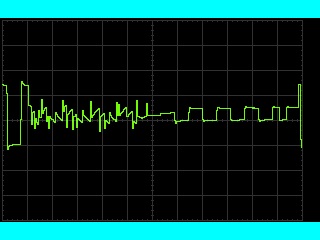Gears2015-07-13 05:20:29
Replacing a Gear Part 1
I've got a Con-Cor 4-6-4 that parts are no longer available for. The only problem with it is the drive gear has split. For a gear this small, a 3D printed version looks like it would be priced really reasonably: Less than $3 for a gear. This post will chronicle the process, and whether or not things worked. This isn't meant to be a step-by-step guide, just an overview of the process.At this point in time:
The gear has been measured and drawn, and a version of it ordered. I have no idea what I'm going to get, only that due to manufacturing requirements I'll have to do some lathe work. I haven't even seen the 3D printed material.
Measuring
Step 1 is measuring the gear. Using digital calipers, I measured the outer diameter (OD) of the gears and various diameters along the axle. Then, I measured the length of the various diameters along the gear axle. For example, the gear has 4 changes in diameter: Just before the teeth, the teeth, just after the teeth, and at the very tip. Four pairs of measurements were required to copy the gear. Also noted was the number of teeth on the gear, and the size and shape of the bore.
I measured the OD of the gear's teeth, as measuring the pitch circle diameter (PCD) was going to be impossible. With directed guessing, I was able to come up with a number for the PCD that fit the measurements. I'll find out if this worked when I get the final gear. A full-scale paper print out looked right.
Assumptions
1. If it measures close to a standard/common size, it probably is.
2. Manufacturers tend to use standard sizes.
Since I had only the OD and number of teeth, I could not generate a gear using drawing software. I had to calculate a PCD somehow. Using a gear calculator, I entered the number of teeth and OD in to the calculator. This gave me a result of .321 MOD for the gear, which is pretty close to .3 MOD. Feeding in .3 MOD for the tooth size, I got a result for the PCD.
Using a CAD/CAM program, I drew a circle the diameter of the gear OD, and generated the gear based upon my calculated gear. It fit the circle nicely. So far, so good. A full scale paper print-out showed I was right on.
Drawing
In preparing for 3D printing, I used a 3D program, SketchUp. I found a gear generator plug in, and started my gear with that. Using the circle and push-pull tools, I created the axle by making the circle the diameter I needed and then push-pulling it to the proper size.
Once the gear was created, I then added the bore. This goes all the way through the gear, and on this particular model it is square. (That is supposed to help with quartering.)
I then exported the gear to the format the 3D printer uses, and ordered the gear. I ran in to a bit of trouble, though, with sidewall thicknesses. The nylon material the 3D printer uses has a minimum thickness of .7mm. Parts of the gear were less than that. I had to make those areas bigger.
My solution was to enlarge the OD of the axle part of the gear like the manufacturer requires. I also extended the axle out so I could chuck it in a lathe collet. I'll turn the axle to exact size after I get the gear.
End Note
If you're familiar with gears, you may be asking about the pressure angle. How did I get it? I didn't. The gears were cheap enough I decided to have gears of both 14.5 and 20 degrees made.



